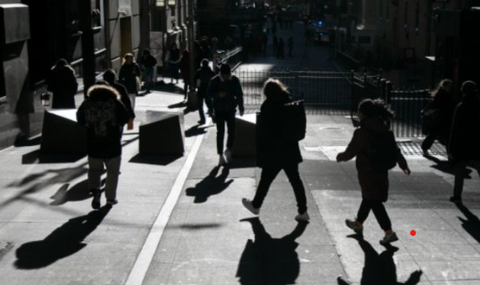Biden and the Democrats have done their damage to the U.S. economy. American citizens are now losing full time jobs at staggering rates, while illegals are gaining employment even while getting massive welfare benefits. This is destroying the US dollar as Biden and the Democrats continue to counterfeit the US dollar (print money with nothing behind it). This causes prices in stores to rise and more and more citizens to get poorer each and every week.
U.S. job growth cooled sharply in July while the unemployment rate unexpectedly rose to the highest level in nearly three years.
The Labor Department on Friday reported that employers added 114,000 jobs in July, missing the 175,000 gain forecast by LSEG economists. The unemployment rate also unexpectedly inched higher to 4.3% against expectations that it would hold steady at 4.1%. It marked the highest level for the jobless rate since October 2021.
US jobs market slows in July as unemployment rate hits 4.3 per cent https://t.co/CnlmrDeCuQ via @FinancialReview
— Nino Brodin (@Orgetorix) August 2, 2024
“Temperatures might be hot around the country, but there’s no summer heatwave for the job market,” said Becky Frankiewicz, president of ManPowerGroup North America. “With across-the-board cooling, we have lost most of the gains we saw from the first quarter of the year.”
Friday’s report adds to mounting evidence that the economy is weakening in the face of ongoing inflation and high interest rates. Stock futures plunged as the report reignited fears of an impending recession, with Dow futures shedding more than 500 points.
That’s because the rise in unemployment triggered the so-called Sahm Rule, an indicator that is used to provide an early recession signal. The rule stipulates that a recession is likely when the three-month moving average of the jobless rate is at least a half-percentage point higher than the 12-month low.
Over the past three months, the unemployment rate has averaged 4.13%, which is 0.63 percentage points higher than the 3.5% rate recorded in July 2023. The Sahm Rule has successfully predicted every recession since 1970.
“The latest snapshot of the labor market is consistent with a slowdown, not necessarily a recession,” said Jeffrey Roach, chief economist at LPL Financial. “However, early warning signs suggest further weakness.”
The weaker-than-expected data also raises questions about whether the Federal Reserve has waited too long to cut interest rates. Policymakers voted at the conclusion of their two-day meeting on Wednesday to hold rates steady at a 23-year high but signaled that they could start loosening policy as soon as September.
Investors are now increasingly betting on the odds of a 50-basis point cut in September amid signs that job growth is deteriorating.
US Job Growth Slows To A Crawl In July As Unemployment Rises https://t.co/RFeMkzNa11 #2024Election #democrats #economy via @DailyNoahNews
— David Smith (@Sm97536886David) August 2, 2024
“The labor market’s slowdown is now materializing with more clarity,” said Seema Shah, chief global strategist at Principal Asset Management. “Job gains have dropped below the 150,000 threshold that would be considered consistent with a solid economy… A September rate cut is in the bag and the Fed will be hoping that they haven’t, once again, been too slow to act.”
Health care continued to lead the way in job creation, onboarding 55,000 new workers in July. Other sectors showing notable growth included construction (25,000), the government (17,000), and transportation and warehousing (14,000).
However, there were some notable job losses last month. Information employment declined by 20,000, while financial activities shed 4,000 employees.
The report also showed modest revisions. Job gains for June were revised down by a total of 27,000 jobs to 179,000, the government said, while May’s gain also came in slightly lower at 216,000 jobs.
Key Points:
i. Significant Slowdown in Job Growth: U.S. employers added only 114,000 jobs in July, missing the forecasted 175,000 and indicating a sharp cooling in the job market.
ii. Unexpected Rise in Unemployment Rate: The unemployment rate rose to 4.3%, the highest since October 2021, surprising economists who expected it to remain at 4.1%.
iii. Recession Fears and Market Reaction: The rise in unemployment triggered the Sahm Rule, suggesting a recession might be on the horizon, leading to a significant drop in stock futures.
iv. Impact on Federal Reserve Policy: The weaker job data raises questions about whether the Federal Reserve has delayed cutting interest rates too long, with increased bets on a rate cut in September.
v. Sector-Specific Job Changes: Health care led job creation with 55,000 new jobs, while information and financial activities sectors saw notable job losses.
Kirk Volo – Reprinted with permission of Whatfinger News



